XBee Buying Guide
With so many off the shelf radio modules available in the market, designers would probably being swarmed by all kinds of technical jargons and numbers like frequency modulation, receiver sensitivity, maximum output power, data rate, networking topology, channel capacity, addressing mechanism, and the list goes on and on.
At times, most of us would be looking for off the shelf radio modules that are easy to use and integrate into any system without having to go through all the detail and cumbersome implementation at the back end. This includes avoiding the need to implement the core elements such as frequency scanning, table routing, network topology, message forwarding, and other complicated tasks.
We have been very fortunate to have worked with numerous radio modules. This goes all the way back when Crossbow‘s Micaz and Moteiv’s (now known as Sentilla) Tmote Sky was introduced and were the reference for the wireless sensor network industry. Then more and more companies started the race to design and manufacture Zigbee and other propriety radio communication stack based radio modules. This includes companies like Coronis, Aerocomm (bought over by Lairdtech), Maxstream (bought over by Digi), RFM, Dust Network, California Eastern Laboratories, Jennic (bought over by NXP), Meshnetics (bought over by Atmel) and few other less known companies. All these companies were either riding on the Zigbee wave or propriety mesh radio communications. At the same time, chips maker were ramping up their production on Zigbee capable and 802.15.4 based radio transceiver. We won’t forget the 1st Zigbee capable radio transceiver that we have used, the legendary CC2420 which is still widely used till today although an upgraded version (CC2520) was later introduced. Texas Instruments (which was considered the leader of the pack), Freescale, Ember, Atmel, and Microchip (came in quite late) was producing so many parts at rate faster than the industry is consuming them. At the end of day, we came to a crossroad to either make or use an off the shelf radio modules. Having tested many of the above either in either chip or ready made radio made modules, we conclude that we have to use the ready made off the shelf radio modules in order to concentrate on the application itself. We ended up with Digi’s XBee.
Without any doubt, Digi ships quite a number of off the shelf radio modules for different types of frequency band, modulation, communication stack, form factors, and cost. One of the most used product from them is the XBee modules. XBee modules is probably one of the easiest (but probably not the cheapest) off the shelf radio modules to use. However, the XBee modules itself comes in few variation and series. We will be talking about the 2.4 GHz XBee modules in this article.
The XBee modules offered by Digi can be classified into 3 main series or type:
- XBee 802.15.4 OEM RF modules (aka Series 1)
- XBee Zigbee RF modules (aka Series 2)
- XBee Digimesh RF modules
All of the above RF modules comes in the same form factor and are pin-for-pin compatible between them. For people that never or rarely use them, when a bunch of these RF modules are mixed together, we might not even notice the differences on first impression. We have been using all of the above RF modules in numerous applications for the past few years and we can say that they are pretty reliable. Now let’s go through each of the RF modules in details.
XBee 802.15.4 OEM RF modules (aka Series 1)
This series of XBee is probably the simplest RF module among them. It provides simple peer-to-peer and point-to-multi point radio communication. Under the hood of the module is a Freescale chipset that takes care of the all the communication stack.
XBee Zigbee RF modules (aka Series 2)
This series is basically a Zigbee RF module that supports the mesh networking. When 2 points are not reachable through direct point-to-point connection, a router (a device type in a Zigbee network that must be on all the time) can be placed in between the 2 points to provide an intermediate communication link. Series 2 has gone various revision and it might be confusing at times to know the differences. Series 2 was introduced to support the Zigbee protocol (Zigbee was also partially supported in Series 1 in the early introduction of Zigbee but they never passed through the beta stage). The chip that was used is based on the Ember EM250 SoC and uses the ZNET2.5 Zigbee stack (hence Series 2 was called Series 2.5 later on). In 2010, a new version of the module was introduced and some internal hardware design was changed. The new Zigbee Pro stack was adopted and they are now known as ZB Zigbee Pro. Digi has also added a programmable version with the codename S2B in which an application microcontroller (Freescale HCS08 variant) is included for user to write their own application code without having external microcontroller. Noticeable improvement was the radio range which has double to 3.2 km for LOS communication for the Pro (long range) variant and also more reliable firmware. An important note would be, Series 2.5 is considered obsolete by Digi and if your buying any Series 2 module, please make sure you have the ZB Zigbee Pro version.
XBee Digimesh RF modules
This series was introduced later compared to the other series. Digimesh RF modules shares the same hardware as Series 1. But, this series utilize a more advance peer-to-peer DigiMesh protocol in 2.4 GHz band that allows sleeping routers which was not available in Zigbee network. This innovative mesh protocol is a propriety protocol by Digi and differentiate itself from Zigbee network by having only 1 type of network device (Zigbee has 3 types of devices: Coordinator, Router and End Device). All devices in the Digimesh network can sleep based on a time synchronization in the network and therefore all of them can be powered by batteries. In a Zigbee network, the Coordinator and Router needs to be main powered for the network to operate while the End Device can be battery powered.
We hope this short article provides some explanation on different types of XBee modules. We hope that the next time you are buying for an example an Arduino XBee shields that comes with an XBee module, you know what you are getting! We are hoping we will get some time to write a tutorial on configuring XBee modules and tweaking the parameters within an XBee network soon. Till then.

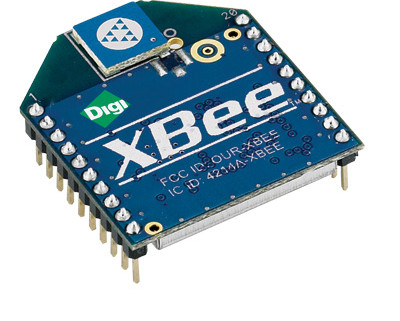
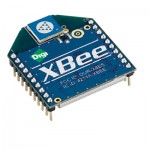
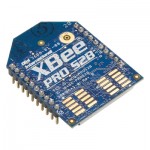
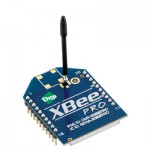
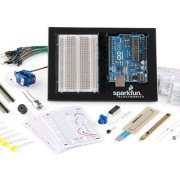







Thank u very much for the info!